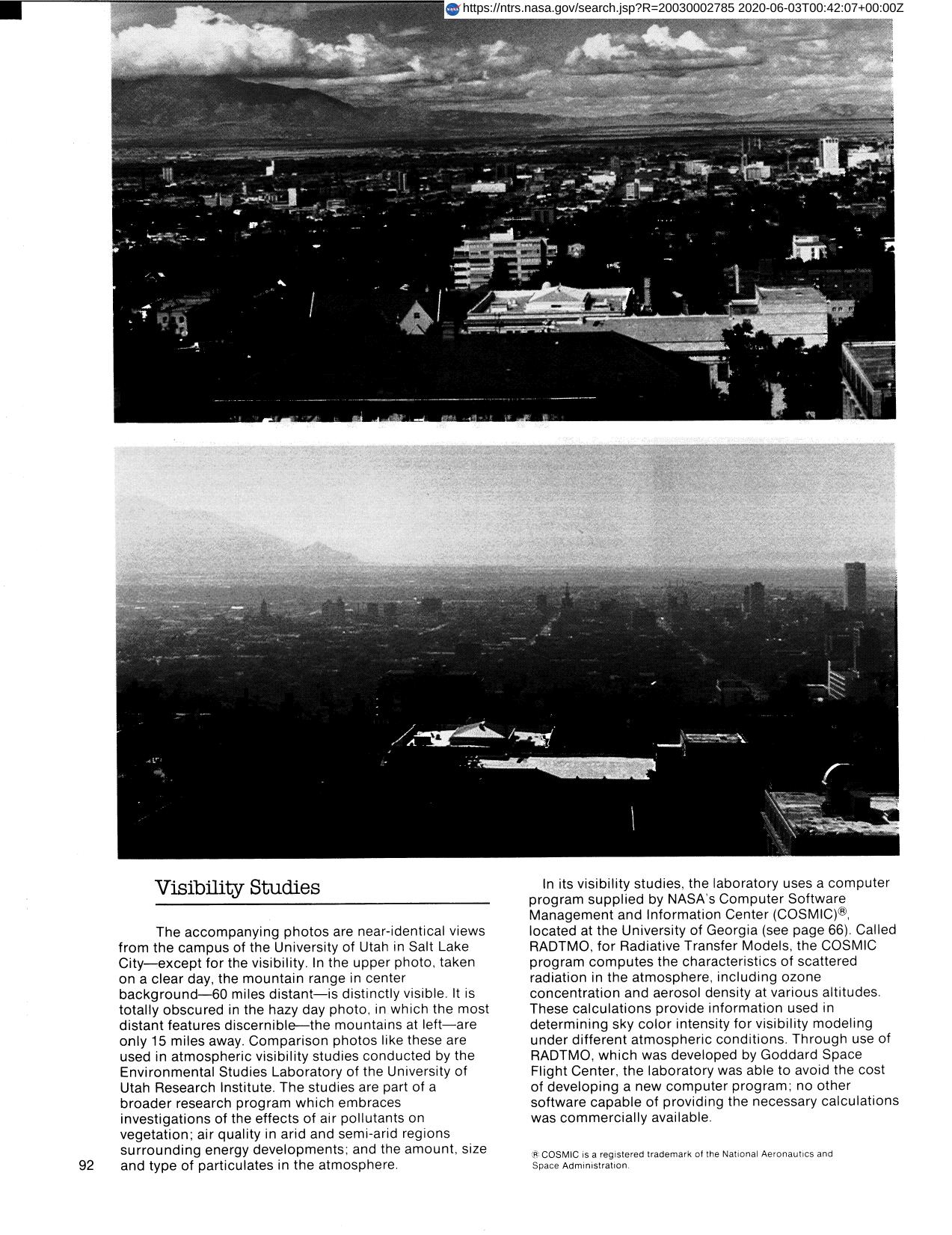
Visibility Studies
Studies conducted by the Environmental Studies Laboratory of the University of Utah embrace investigations of the effects of air pollutants on vegetation; air quality in arid and semi-arid regions surrounding energy developments; and the amount, size and type of particles in the atmosphere. In its visibility studies, the laboratory uses a computer program called RADTMO for Radiative Transfer Models. The program computes the characteristics of scattered radiation in the atmosphere including ozone concentration and aerosol density at various altitudes. Calculations provide information used in determining sky color intensity for visibility modeling under different atmospheric conditions. The laboratory was able to avoid the cost of developing a new computer program by using RADTMO for their calculations.
Full article: http://hdl.handle.net/hdl:2060/20030002785

Visibility Studies

Visibility Studies













